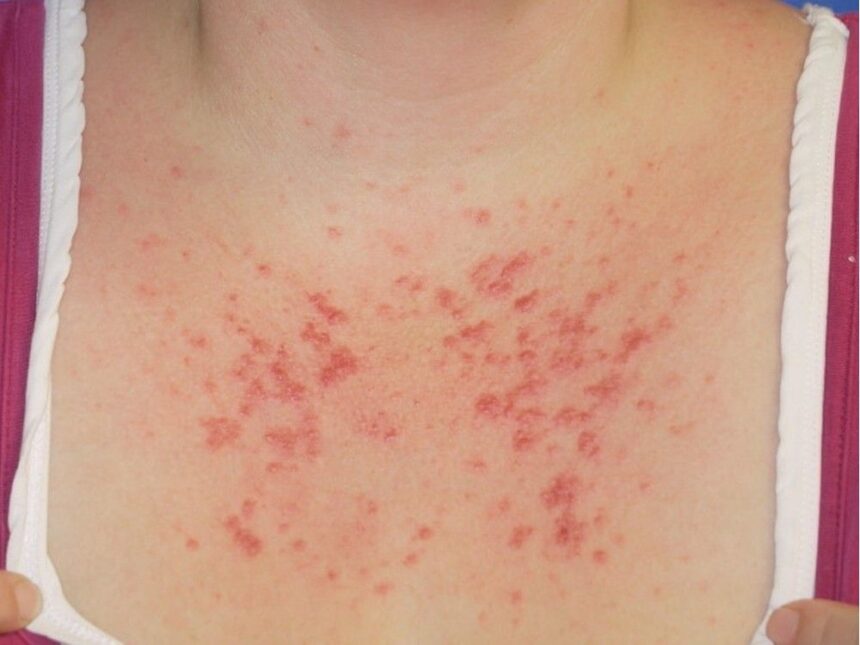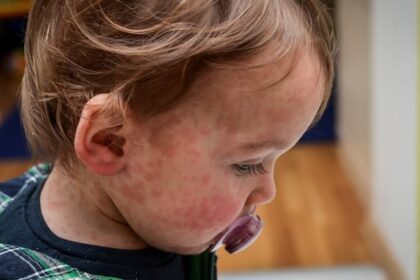Article contentArsenault says her main symptom – the rash – is barely noticeable visually, but every inch of her skin that’s affected feels like it’s been covered in mosquito bites.Article content“During more severe reactions, it also feels like those mosquito bites are being held very close to flame. It’s absolutely miserable!”Article content An example of a reaction to a sun allergy. Wikimedia CommonsArticle contentSun allergies: Who gets them?Article contentAnyone can get sun allergies, but you’re more at risk if they run in the family.Article contentOther risk factors include certain medications, skin conditions (dermatitis) and certain substances like fragrances and chemicals present in sunscreens, per the Mayo Clinic.Article contentIt’s not just children who have to worry about sun allergies. In fact, PMLE is more common among teenagers and young adults, according to the Cleveland Clinic.Article contentIt’s also possible to develop a sun allergy later on, even if you didn’t have one when you were small, according to Liu.Article contentArticle content“A lot of people develop PMLE in their 20s, 30s or even later,” explains the expert. “Your skin’s immune response can change over time, and suddenly what used to be ‘just a tan’ turns into rashes or hives after sun exposure. Very common in fair-skinned individuals, but it can also happen in any skin tone.”Article contentIn fact, one of the biggest misconceptions surrounding sun allergies is that it only happens to those with light skin, says Liu.Article content“Not true – I’ve seen it in all skin tones,” she adds.Article contentIt’s also incorrect to assume that sun allergy is the same as being ‘sunburn-prone,’ Liu explains. It’s an immune reaction, not just a sensitivity.Article contentThinking that sunscreen alone can ‘cure’ a sun allergy is also inaccurate.Article content“Sunscreen helps, but clothing, timing, shade, and sometimes medications are key too,” says Liu.Article contentAs for medications, these need to be discussed with your health-care provider first, she adds.Article contentArticle contentPreventing an allergic reactionArticle contentFor Arsenault, preventing an allergic reaction has been her saving grace.Article content“I’ve found that there is no cure once the reaction starts,” says Arsenault, adding that as little as 10 minutes or less of UV exposure is all it takes.Article content“No amount of allergy medication, creams, aloe, etc., can provide any level of relief. The reaction can last from a few hours to two days. Prevention is the only way to avoid it.”Article contentThis doesn’t mean you have to shut yourself indoors all summer if you have a sun allergy. Summer fun is still possible, but you’ve got to be strategic with prevention, according to the dermatologist.Article content Wide-brimmed hats and long sleeves are key for people with a sun allergy. ContributedArticle contentUPF clothing, religiously applied sunscreen, hunting for shade and timing of outdoor activities all matter, says Liu.
Living with a sun allergy can be ‘absolutely miserable,’ says PEI woman











